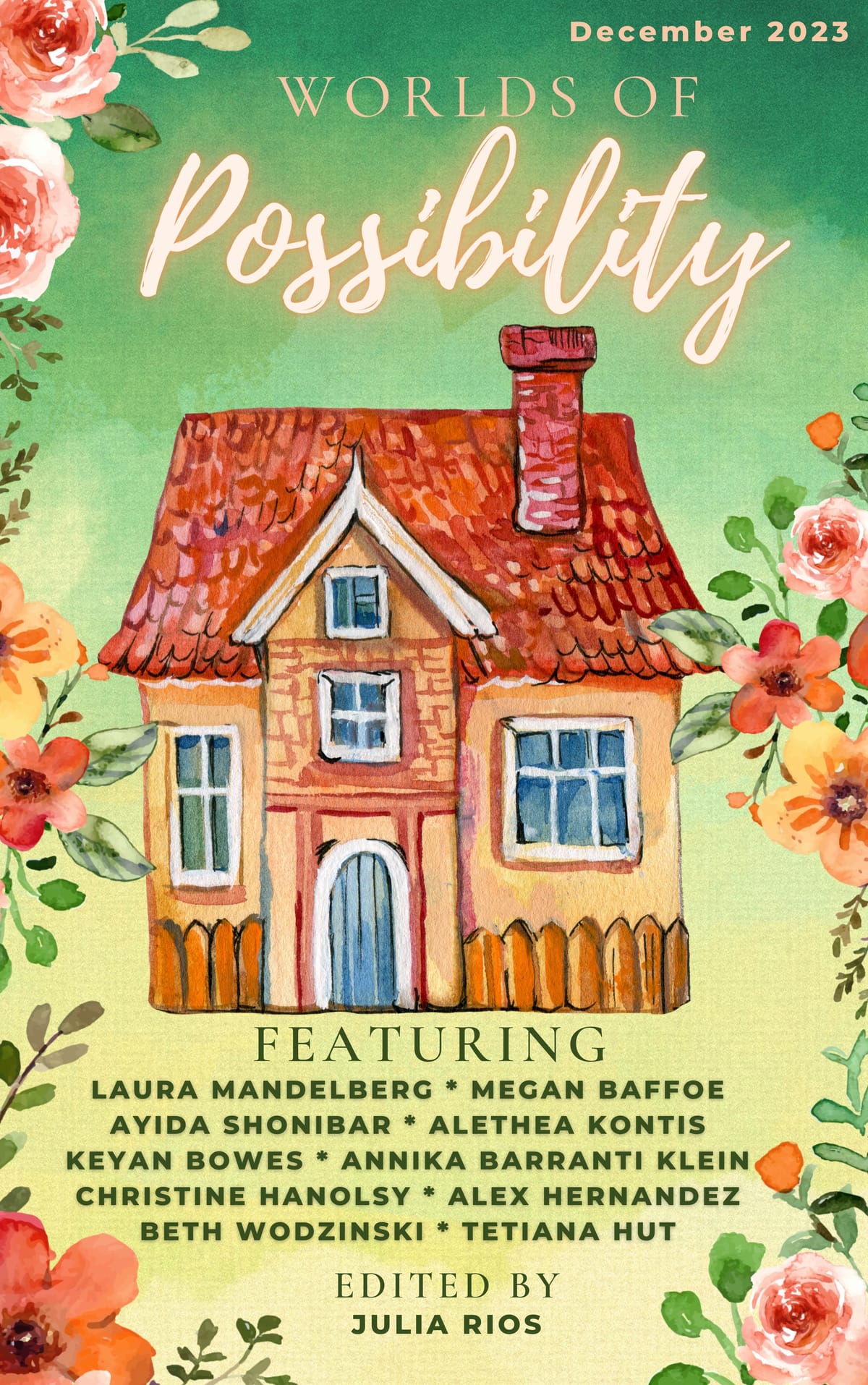The December 2023 Issue of Worlds of Possibility
Welcome to the December 2023 issue of Worlds of Possibility. Usually the ebook version is only available to paid subscribers, and individual pieces appear online later for free, but this time the entire issue is being released for free to everyone right away as an end of the year gift.

Welcome to the December 2023 issue of Worlds of Possibility. Usually the ebook version is only available to paid subscribers, and individual pieces appear online later for free, but this time the entire issue is being released for free to everyone right away as an end of the year gift. You can download your preferred format, or click on the links in the table of contents below to find individual pages for each piece. If you enjoy what I do with this project, please tell others. Subscriptions make it possible for me to continue paying creators for new work.
Paid subscribers can get past issues at any time by visiting the individual issue pages. October 2023, August 2023, June 2023, April 2023, February 2023, December 2022, October 2022, August 2022.
Below is the editor's note I included with this issue. You can also listen to a podcast of me reading it aloud. The podcast episode with the editor's note also includes the interviews with Alex Hernandez and Beth Wodzinski.
Listen to "The December 2023 Issue of Worlds of Possibility Is Here!" on Spreaker.A Note from the Editor
This issue contains three pieces of original artwork, four short stories, two poems, and one essay.
Normally I save the content notes for the end of the ebook, or for the individual piece pages online, but in this issue, I do feel it’s important to mention one right away.
The artwork that opens this issue (“Ceasefire” by Alex Hernandez), and the essay that follow it are both engaging with Palestinian solidarity. While the artwork and accompanying interview are more focused on the historical culture of Palestine, the essay digs deeper into the past and present violence.
Since October of this year, our news has been full of the violence in Israel and Palestine. There’s also been a rise in antisemitism and islamophobia, both of which make me angry and sad. I felt that it would be best to let someone who is personally attached to both Judaism and Palestinian solidarity have the floor, so I invited a local-to-me activist, Laura Mandelberg, to write about her experience. Laura’s essay is a difficult read, but it also offers some hope that people can change, and can choose to stand up for one another. It’s also full of links to other sources where you can learn more about the current situation and the history of that region. Note: If you are downloading the PDF version, that won't contain any links, so please check out the ebook and online versions of Laura's essay to get those!
Where I live, we’re in the darkest part of the year, when the days are shortest, and the weather is coldest. Two of the pieces in this issue directly explore that space and give us hints of how to find hope when everything is dark and dreary. “Morning Dew” by Megan Baffoe gives us a look at one man’s garden in different seasons, and the gentle question of how to maintain one’s mental health (and a fairy romance) after the dazzling brightness of summer fades away. “Fallowtide” by Beth Wodzinski is a gorgeous piece of artwork, and in the accompanying interview, Beth also talks about the deep work that happens under the surface when the ground is covered with snow and the trees have lost all their leaves.
Continuing with the theme of fairies, Keyan Bowes brings us a story of found family and magic in “A Refugee from Fairyland”. This story is illustrated by Tetiana Hut. Ayida Shonibar’s poem “Sweet Child” gives us a hint of magic and a taste of home that can magically appear wherever it is most needed.
“In Case of Emergency” by Alethea Kontis is the second poem in this issue, and it is a poem of empowerment, suggesting that the narrator herself is the one who can make herself at home by embracing her full desires and personality.
From there, we visit two different houses, both seemingly sentient. In Christine Hanolsy’s “House Call” a home falls ill, and the narrator’s family must try to nurse it back to health. And we end with some coziness via “Heartbeats” by Annika Barranti Klein, wherein the house has a special connection to our narrator, and each must take it in turn to save the other.
The cover was designed by me using stock art, and any other art you see in this issue that was not listed above is also stock art. To the best of my knowledge, I do not use AI generated images.
All Best,
Julia Rios
Table of Contents
- Ceasefire - Art by Alex Hernandez
- Unlearning Myths, Learning Solidarity: My journey to calling for a ceasefire and Palestinian freedom - Essay by Laura Mandelberg
- Morning Dew - Story by Megan Baffoe
- Fallowtide - Art by Beth Wodzinski
- A Refugee from Fairyland - Story by Keyan Bowes with an original illustration by Tetiana Hut
- Sweet Child - Poem by Ayida Shonibar
- In Case of Emergency - Poem by Alethea Kontis
- Housecall - Story by Christine Hanolsy
- Heartbeats - Story by Annika Barranti Klein


